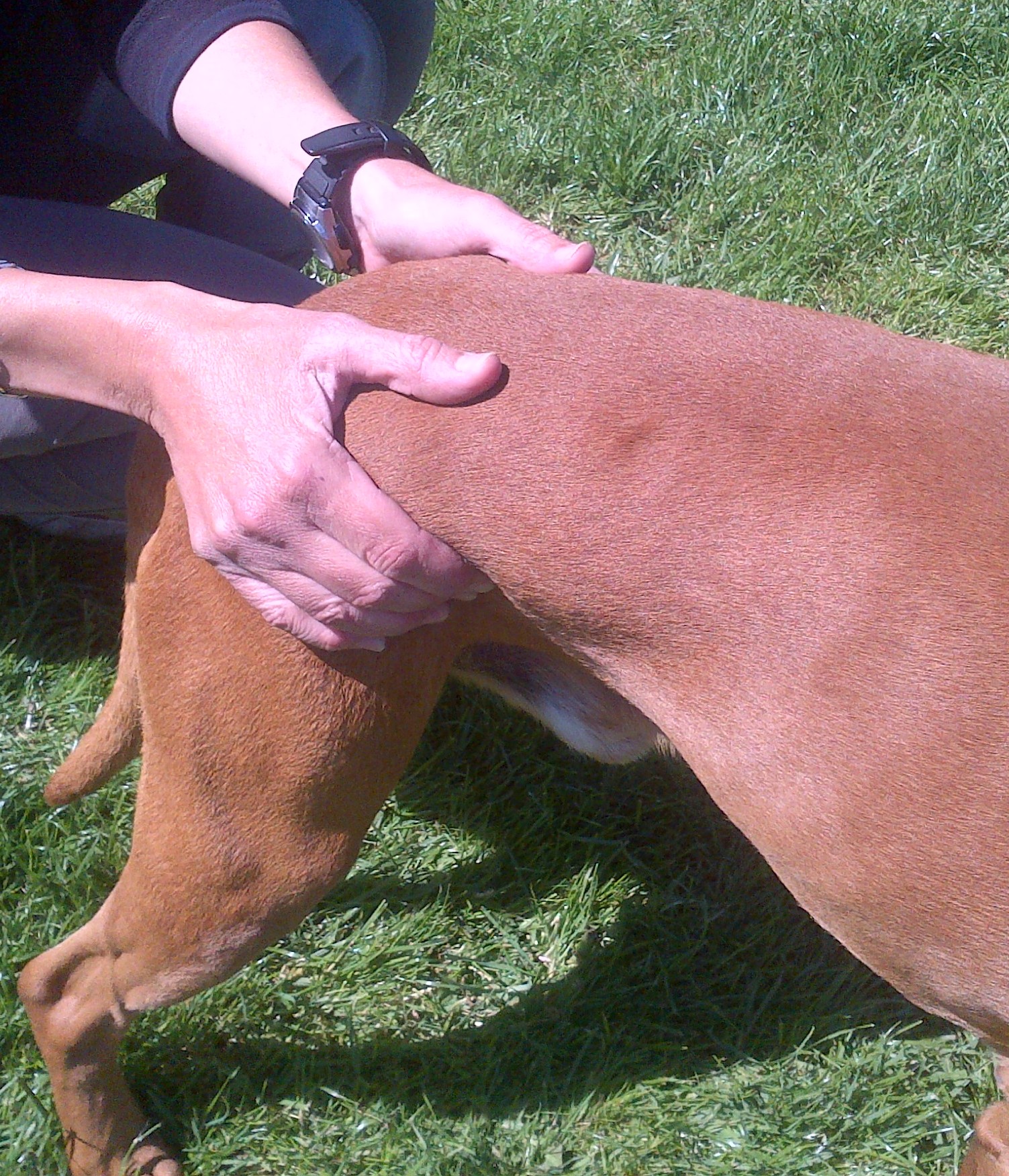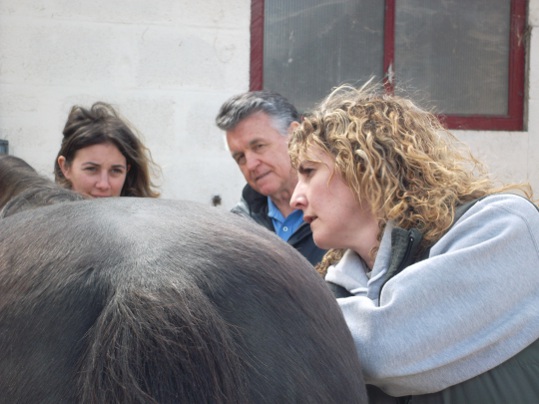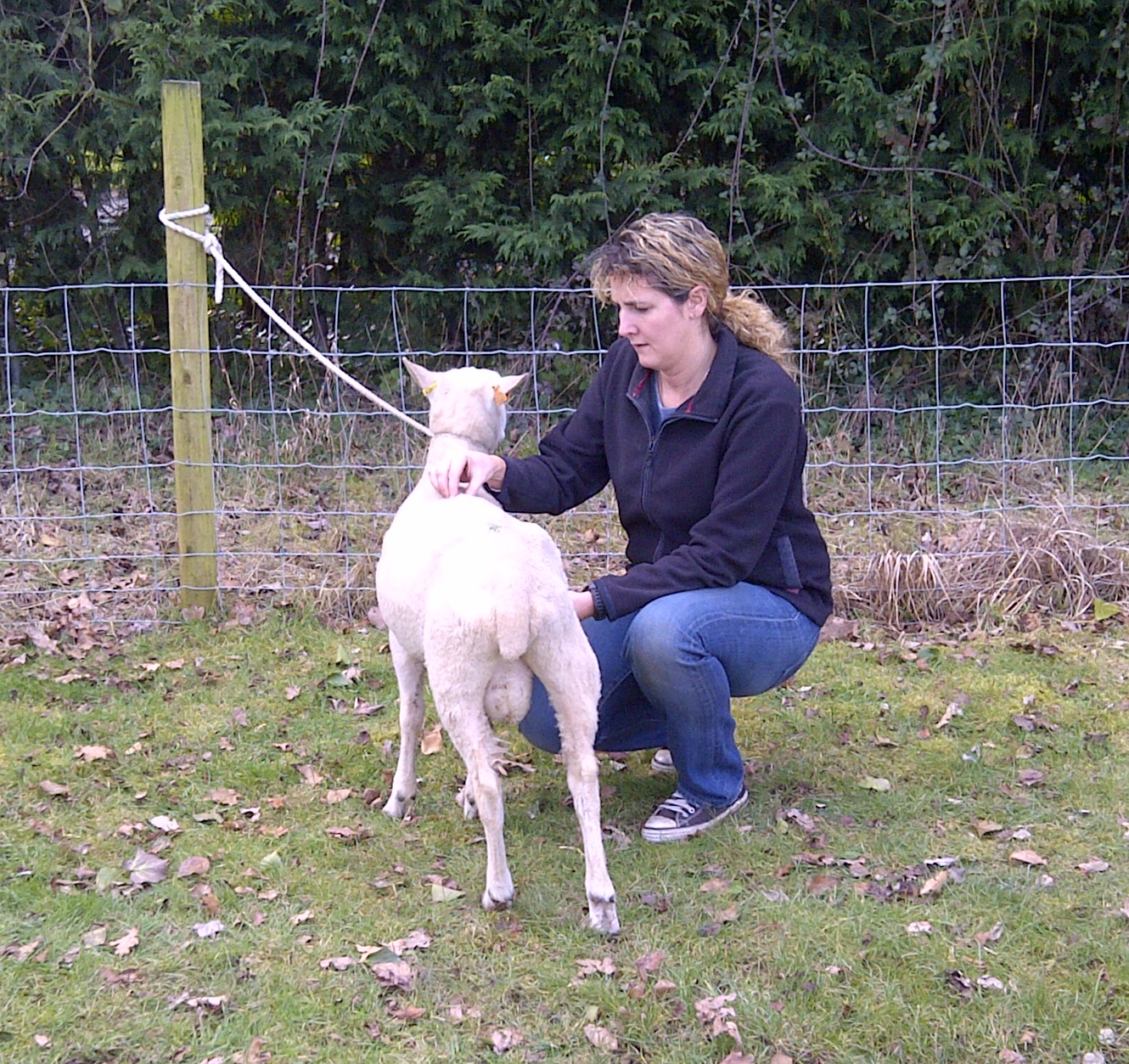Chiropractic for Animals
Waterside Chiropractic provides McTimoney and International Academy of Veterinary Chiropractic Animal Chiropractic care for horses, dogs, other domestic animals and farm animals throughout the counties of Sussex, Hampshire and Surrey (other areas can be considered upon request).
Like people, animals can suffer from back, neck, pelvic and musculoskeletal problems and they too can benefit from chiropractic treatment. Chiropractic for animals is a gentle non-invasive holistic treatment which works by releasing restrictions within the joints and musculature whilst considering asymmetries within the skeletal alignment so that the nervous system can work as efficiently as possible. Chiropractic will align and balance the animal’s musculoskeletal system, so optimizing the individual’s dynamic flexibility. By making subtle adjustments throughout the whole body whilst paying special attention to the spine and pelvis, health, soundness and performance may be restored and maintained. Together with physical therapy techniques it realigns and balances the animal’s musculoskeletal system. Most animals readily accept and enjoy the treatment and owners like it because no anaesthetic or drugs are needed. Comprehensive individualised after-care advice and support forms part of the package.
For more than 50 years, those trained in McTimoney and other animal chiropractic techniques have been helping horses, dogs, cats, farm and zoo animals – the range of animals treated has even widened to include some ‘exotic’ species.
Many animals can benefit from chiropractic care and physical therapy together with tailored aftercare advice, whether they are ‘just’ a pet or have to work hard as part of their job.
It is not always easy to tell whether an animal is in pain or is suffering discomfort, their innate survival mechanisms mean that they will adapt or adopt changes to the way that they live their lives to hide such symptoms. Their pain thresholds are often quite high and small changes over time can appear less noticeable. It is often not until the owner notices a significant change in their animal’s behaviour or general health, the animal appears reluctant to exercise, or the owner notices that the animal is finding their normal work difficult to do, that any help is sought for the animal. Many owners will just assume that their animal is “just getting old”.
Animal Chiropractors work alongside the veterinary profession and under current legislation can only treat an animal with a Veterinary Surgeon’s approval. Most vets are aware of the benefits of chiropractic treatment for animals and will often readily give permission for an animal to be adjusted. Waterside Chiropractic has found that many local veterinary surgeons may suggest animal chiropractic as part of the treatment plan.
There are several common causes of back pain and musculoskeletal problems in the dog and horse and many signs and symptoms that your animal may exhibit if they have back pain or musculoskeletal problems. Please click on the links below to see examples of common signs and symptoms that are shown by many animals; these are not exhaustive as it is likely that you will know your animal far better than anyone else!
Please note that the following signs and symptoms may be as a result of a veterinary condition and if your animal is displaying any of these, then in the first instance you should be consulting your veterinary surgeon for their opinion. Your vet will then be able to refer you on to a chiropractor for treatment if there is no underlying primary veterinary medical condition causing the presenting symptoms or affecting your animal’s behaviour.

Common causes and Symptoms within Animals
- Constant pulling on the lead, halti or harness
- Falls, slips and tumbles at home on slippery floors or whilst out being exercised
- Rough play with friends and toys, e.g. tug games, chasing companions and bowling each other over
- Direct consequence of trauma, e.g. road traffic accidents
- Compensation from other injuries or illness
- Repetitive training and other one-directional activities that place stresses asymmetrically on the body
- Athletic injuries or injuries obtained whilst working, racing or doing agility
- Whelping
- Altered gait as a result of injury or illness or other biomechanical or locomotory changes.
- Direct consequence of trauma, e.g. falls, road traffic accidents
- Compensation from other injuries or illness
- Conformational compensations
- Poor foot balance
- Unbalanced riders or not being evenly worked which result in stresses being placed asymmetrically on the body
- Altered gait and/or lameness as a result of injury or illness or other biomechanical or locomotory changes
- Getting cast
- Poorly fitting tack and rugs
- Sharp teeth
- Inappropriate work intensity or insufficient warm up/cool down.
Please note that the following signs and symptoms may be as a result of a veterinary condition and if your dog is displaying any of these, then in the first instance you should be consulting your veterinary surgeon for their opinion. Your vet will then be able to refer you on to a chiropractor for treatment if there is no underlying primary veterinary medical condition causing the presenting symptoms or affecting your dog’s behaviour.
- Uneven or unlevel gait, or crab like movement
- Stiffness after rest or exercise
- Limping/lameness
- Crying out when getting up or moving
- Difficulty going up/down stairs or getting in/out of cars
- Signs of discomfort when being stroked or handled or touched in certain areas
- Reluctance or intolerance of exercise, lethargy
- Deterioration in performance or energy levels
- Behavioural changes
- Asymmetric muscle tone
- Always sitting or lying on one side
- Uneven pad and claw wear
- Tripping or stumbling, dragging toes or feet
- Pacing (in some instances)
- Knocking down fences in agility
- Not wanting to stand square
Please note that the following signs and symptoms may be as a result of a veterinary condition and if your horse is displaying any of these, then in the first instance you should be consulting your veterinary surgeon for their opinion. Your vet will then be able to refer you on to a chiropractor for treatment if there is no underlying primary veterinary medical condition causing the presenting symptoms or affecting your horse’s behaviour. Some of these symptoms may also be caused by poor foot balance/shoeing, poorly fitting tack or teeth.
- Behavioural changes, unexplained loss or deterioration in usual performance or energy levels
- Bucking, rearing, napping, unexplained resistance, refusing to jump or jumping to one side
- Frequently knocking down of jumps, reluctance to jump through combinations/spreads, not travelling through the air or unable to bascule effectively
- Stiffness on one rein, inability to track up, uneven or unlevel gait, either in front or behind
- Asymmetrical muscle tone, uneven muscle development, hypertrophy or atrophy of muscles
- Lack of impulsion, difficulty in engaging the hindquarters, unwillingness to go forward or extend
- Rushing into canter/striking off incorrectly, changing legs, preference for one canter lead or trot diagonal, bunny hopping or going disunited in canter, difficulty carrying out lateral movements
- Leaning on one rein, head shaking or tilting the head to one side when being ridden
- Cold backed
- Biting or kicking out when groomed, girthed or mounted
- Uneven pressure from the saddle or saddle slips to one side
- Lack of and/or reducing level of topline musculature
- Carrying the tail to one side
- Constantly resting a leg, continually shifting weight when standing still or not wanting to stand square
- Tripping or stumbling, toe dragging, uneven hoof/shoe wear
Questions
Chiropractors believe that the correct functioning of the nervous system is paramount for a healthy body. Chiropractic is concerned with the diagnosis, treatment and prevention of biomechanical disorders of the musculoskeletal system and the effects of these disorders on the function of the nervous system and physical and general health. Chiropractic treatment is a method of releasing restrictions within the joints and musculature whilst considering asymmetries within the skeletal alignment so that the nervous system can work as efficiently as possible. A range of techniques are normally used to improve function and increase the mobility and range of motion of the joints with the aim of providing relief from pain and discomfort.
Chiropractors use manual techniques (normally spinal adjustments and other joint and soft tissue manipulation) to mobilise and manipulate specific joints and muscles that may be causing back, neck, pelvic and musculoskeletal problems. There are a number of different chiropractic techniques that are practiced universally; Waterside Chiropractic predominantly offers the McTimoney Chiropractic technique integrated with soft tissue release (STR) for human patients and this approach is integrated further with the International Academy of Veterinary Chiropractic (IAVC) technique for animal patients. These techniques are recognised for being relatively gentle, precise, whole body approaches to chiropractic care for both humans and animals.
Both people and animals, particularly when they are in pain, can be very sensitive. Chiropractors use just their hands to deliver quick, light adjustments which ensures minimum discomfort. It is the speed and precision of the adjustment rather than the force applied that helps to realign the body. The body is then in the best position to use its innate ability to heal itself.
McTimoney Chiropractic is a gentle non-invasive holistic treatment which works to realign and balance the musculoskeletal system, restoring health, movement, soundness and performance through manipulation that releases restrictions within and realigns the joints, relieving muscle tension and associated discomfort. No anaesthetic or drugs are needed and comprehensive individualised after-care advice and support forms part of the package.
McTimoney Chiropractic was devised by John McTimoney in the 1950s. He used the technique initially to treat human patients and then adapted it to be able to treat animals. Animals, like humans, have a musculoskeletal structure that consists of bones, joints, ligaments and muscles, and like humans, they can suffer from similar types of skeletal disorders and muscular strains, e.g. back, neck, pelvic and joint pain. The McTimoney Chiropractic technique can be used on humans and animals of all ages, from the very young to the elderly.
McTimoney Chiropractic is a whole body technique; that is the whole body is assessed and treated, not just the area of pain and discomfort. This is because the area that may be most affected by pain or discomfort may be as a result of a problem in another part of the body, i.e. it is compensating for another area. It is a treatment that is known for being relatively gentle and most humans and animals enjoy being treated and respond well to treatment. Chiropractic can help with freedom of movement by maintaining mobility and a good range of active and passive motion within the joint.
Soft Tissue Release (STR) is an advanced sports massage technique widely used in assessing and stretching soft tissues; muscles, fascia, tendons and ligaments. It is a dynamic, highly effective technique that has an immediate and powerful effect on muscle and connective tissue. STR is a combination of Myofascial Release, Therapeutic Massage and Active Assisted Stretching. STR involves repeatedly and quickly stretching small areas of the soft tissue. Precise pressure is applied to part of the muscle which is then moved to achieve a very specific stretch.
Muscles are made up of strands of muscle fibres which should lie neatly alternating with one another. Each muscle has attachment points where they attach to bones or other connective tissue. However, muscle fibres can become damaged which can distort attachment points and cause restrictions in mobility and pain.
Stretching is often used for easing the pain of muscle tension and realigning the body so that it functions in a more optimal way. However, unlike generalized stretching, soft tissue release targets specific areas of tension within a muscle. It is also useful for targeting muscles that are difficult to stretch actively and for isolating a muscle within a group of muscles that would normally stretch together.
STR involves the use of manual pressure on a muscle to create a temporary false attachment point and then taking the muscle into a pain-free stretch to address adhesions within the muscle fibres. STR is used to increase range of movement, relieve pain, prevent, repair and manage injuries.
STR is an excellent way of treating tendonitis in a muscle as it takes pressure off its point of origin, which is where the inflammation occurs in this condition. It has also been proven to be useful in the treatment of certain conditions such as medial and lateral epicondylitis (Golfers and Tennis Elbow) and plantar fasciitis (Policemen’s Foot/Heel) as it stimulates tissue repair in these conditions.
The International Academy of Veterinary Chiropractic (IAVC) is affiliated with Options for Animals International, which offered a post-graduate program in animal chiropractic from 1986. Most of the work in animal chiropractic is extrapolated from the human chiropractic profession, both in technique and in functional theories to explain clinical results. The last decade has demonstrated tremendous potential benefits of animal chiropractic from applications in clinical practice. The International Academy of Veterinary Chiropractic technique is an emulation of the Gonstead and Diversified techniques.
Like McTimoney Chiropractic, Veterinary Chiropractic is a manual therapy, which looks for areas of restriction of movement and restores function of muscles and joints in the neck, back, pelvis and limbs to maintain optimum movement and soundness. It also focuses on the biomechanical dysfunction of the spine and its effects on the entire nervous system throughout the body.
Veterinary Chiropractic treatment does not replace traditional veterinary medicine; however, it can provide additional means of diagnosis and treatment options for underlying problems or pathologies as well as treating biomechanical-related musculoskeletal disorders.
Veterinary chiropractic treatment can be used for:
• Chronic musculoskeletal problems
• Acute problems such as tension or stiffness
• Addressing compensations from underlying pathologies
• Prophylactic treatment to maintain fitness
• Maintenance of soundness in older animals
• Enhance performance ability in animals
• Treatment of chronic and acute pain syndromes
• Complementary treatment for chronic lameness
A healthy animal should move symmetrically and bend in all directions without tension. Even though animals have a muscle mass over the spine, the vertebral joints are flexible and relatively easy to manipulate with minimal force. An animal showing tension, pain, muscle imbalance or asymmetry, may possibly have restricted movement within a joint. When a chiropractor identifies restriction of movement within a joint, the aim is to restore mobility to the joint by means of a speedy, short thrust along the plane of the joint. This is called the chiropractic adjustment.
Chiropractic can help an animal to move more freely and symmetrically. By maintaining mobility and a good range of active and passive motion within the joint, wear and tear of the joint can be minimised and will promote long-term health. Hence treatment can be suitable for animals of all breeds and ages. Performance animals will normally need the most frequent treatment due to the stress on their body.


